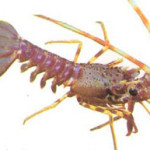
Diadema spp.
Sea urchins are often used as indicator organisms in public aquariums to determine whether the system is functioning properly. These organisms are extremely sensitive to water conditions and are first to show signs of stress, seen when their spines are laid down or are shed.
Warning! Some sea urchins are covered with sharp venom-filled spines that can easily penetrate and break off into the skin – even through a wetsuit. The DAN (Divers Alert Network) website contains useful information on how to handle the unfortunate effects of accidental brushes with these and other poisonous marine organisms. Check out www.diversalertnetwork.org for any information that you need.
Sea urchins (echinoderms) are a group of marine invertebrates that can be found in almost every major marine habitat from the poles to the equator and from the inter-tidal zone to depths of more than 5,000 metres. There are around 800 extant species and the group has a long and detailed fossil record stretching back many millions of years.
All echinoderms have tube-feet and these play a very important role in feeding and respiration. Echinoderms move by means of spines and climb and cling on to hard substrata by means of their tube-feet. The spines also offer the primary means of defence. Sea urchins feed in a variety of ways. They have a powerful internal jaw and graze on algae or sedentary organisms. The long-spined black sea urchin (Diadema antillarum) is an herbivore whose grazing habit is particularly important in the maintenance of healthy coral reefs.
During the 1980’s, an unidentified water-borne pathogen caused a massive die-off of this key indicator in the Atlantic-Caribbean region. The loss of large quantities of these major consumers of algae caused an ecosystem imbalance that currently still threatens corals, changing reefs from coral to algal. Whilst algae is important for reef productivity, a low incidence of the grazing urchins can allow the algae to smother the corals and substrates.
This conspicuous organism, known as the black sea urchin, or long spined black urchin, is easily recognized by its long, black spines, which may radiate up to 30 cm from a relatively small test. The spines are coated with a mildly toxic, irritating mucous. It is most often found in moderately shallow coral reef and seagrass habitats, particularly in more sheltered areas such as depressions in coral. It ventures out to feed at night.







Social Profiles